Table Setting Rules for Creating Stunning Tablescapes
Introduction to Table Setting for Tablescapes
The art of table setting and creating captivating tablescapes is a time-honored tradition that transforms ordinary meals into memorable dining experiences. Whether you're hosting an elegant formal dinner party, a festive holiday gathering, or an intimate family dinner, the careful arrangement of table elements can set the stage for an unforgettable event.
We'll explore the intricate details of table setting and tablescape design, from selecting the right dinnerware to coordinating colors, understanding etiquette, and even the subtle nuances of wine pairing.
Plus, I'll sprinkle in some real-life stories because, let's face it, even the fanciest dinners can have a funny or unexpected twist because those moments make dining memorable.
So, if you're setting the table for a casual get-together or a big formal gathering, these are details you need to craft a stunning tablescape that leaves a lasting impression on your guests.
And trust me, I have a long history of leaving lasting impressions. Keep reading the find out why. 😉
Table Setting and Tablescape: The Beginning of My Obsession
In the grand scheme of life, some moments change us forever. Some are profound; others, well, not so much. My story falls in the "not so much" category, but it's a tale I hold dear because it marks the curious genesis of my fascination with table settings and tablescapes.
It all began on the seemingly ordinary night before Thanksgiving, after some light prep-cooking while my family lounged watching movies at the house. I was eager to start new traditions, making the holiday special. And what better way to do that than to "elevate" our holiday table settings? The idea hit me like a bolt of lightning.
Table Setting and Tablescape Fail
Dollar Tree Delight
Mere hours before our feast, I embarked on a frenzied mission to transform our dining table into a masterpiece. Armed with unwavering determination and a budget-friendly spirit, I ventured to the one place where creativity meets frugality—the Dollar Tree.
My shopping cart, a veritable treasure trove of potential, was filled with stemware that seemed a bit too fragile for a strong breeze, plastic gold chargers that could blind a deer in the headlights, a foam pumpkin that probably belonged in the Halloween aisle, two mini pumpkins that were the only legit items in the bunch, faux floral moss that I suspect had seen better days and oversized, white geometric tea-light candle holders that screamed, "Buy me, and you'll regret it later."
Back home, my dining room became the makeshift studio for this grand experiment. With unwavering enthusiasm, I placed the gold chargers with military precision, each plate landing on its designated saucer like a crash-landing spaceship finding its target. My dollar store stemware stood tall, though a bit shaky, with the price stickers still attached, and the foam pumpkin—well, it bravely assumed the role of the centerpiece, flanked by those two mini pumpkins as its loyal bodyguards.
The crowning jewel was the faux floral moss, which I promptly spread across the table like an overzealous gardener with a mission to cover every square inch. And the oversized, white geometric tea-light candle holders? They joined the fray, housing tea light candles.
I'm still haunted by my reaction. As if it isn't bad enough that I stood back, admiring my Dollar Tree masterpiece, basking in the glory of it all, I continued on to forever capture it on camera, then post it on social media, bragging about my newfound skillset.
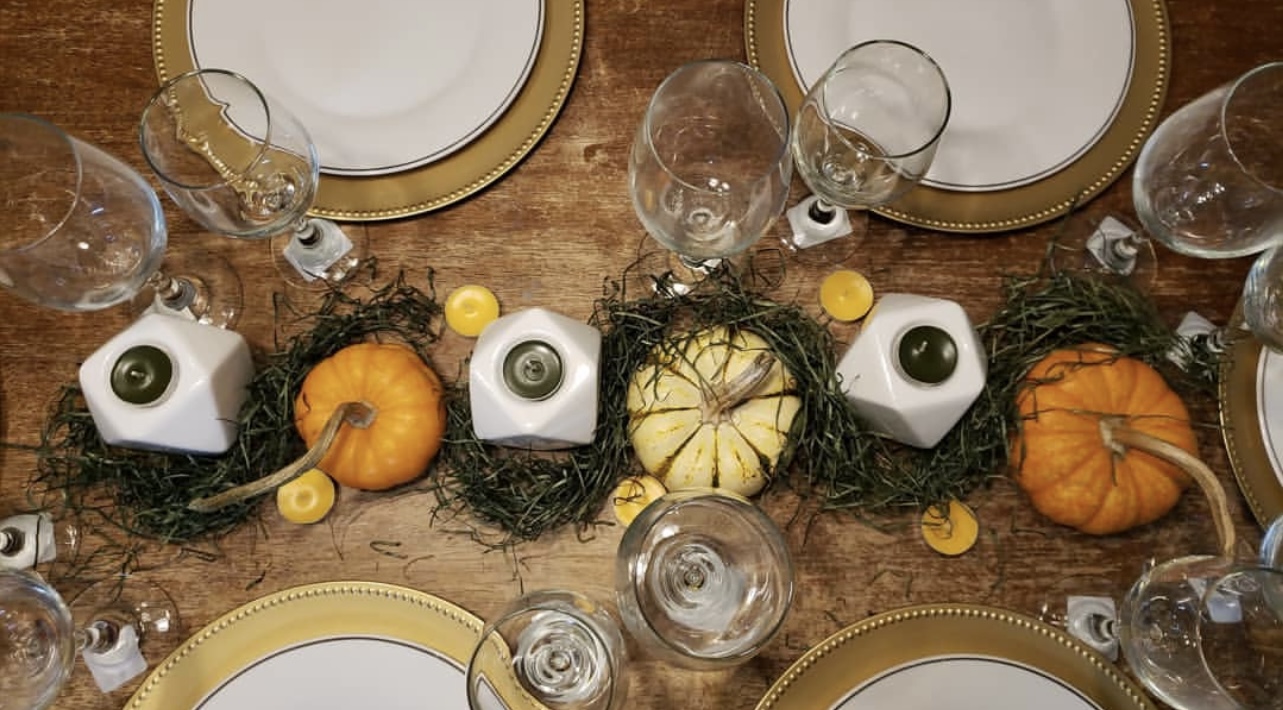
Table Setting Progress
Looking back, I can't help but chuckle at the absurdity of it all. It was a spectacle of epic proportions, a curious blend of grandeur and gaudiness. It was simultaneously embarrassing and endearing—a stark reminder that the path to mastering the art of tablescaping is paved with humble beginnings.
While it's easy to cringe at that memory now, that moment ignited my love for tablescaping. I realized there was an art to creating an inviting and visually appealing dining experience. I embarked on a journey of discovery, diving into the rules of etiquette, the nuances of proper hosting, and the aesthetics of table settings.

Over time, my tablescape skills evolved, as did my confidence as a host. I learned that it wasn't about the price tags on the items or the perfection of each element but the genuine effort and thoughtfulness behind it all. My Dollar Tree debacle taught me that, and I'm eternally grateful.
Today, my tablescape adventures range from small, intimate gatherings to elaborate formal affairs. I've come a long way from my Dollar Tree days, but I'll never forget where it all began—a Thanksgiving table that was equal parts cringe-worthy and delightful.
The Art of Table Setting
The Basics
Table setting basics are the essential elements that lay the foundation for a well-arranged dining table. When correctly placed, these components ensure a harmonious and functional dining experience. The fundamental elements of table setting include dinnerware, flatware, glassware, and napkin presentation.
Dinnerware
The dinnerware includes the plates and bowls used for serving food. Traditionally, a basic setting consists of a dinner plate, a salad or appetizer plate, and a soup bowl if applicable. Each plate has its designated place in the arrangement.
Flatware
Flatware encompasses the utensils required for dining. This typically includes a fork, knife, and spoon. The key to proper flatware placement is arranging them according to their use, starting from the outermost pieces and moving inward. Forks typically reside on the left side, while knives and spoons are on the right.Glassware
Glassware
Glassware includes the various types of glasses used for beverages. The arrangement may consist of a water glass, a white wine glass, and a red wine glass placed diagonally above the knives and spoons.
Napkin Presentation
Napkin presentation adds an elegant touch. Guests typically find their napkins neatly folded or creatively arranged on the dinner plate or to the left of the forks. Proper placement assures guests are ready to begin their meal in style.
These foundational components form the backbone of a well-set table, creating an organized and aesthetically pleasing dining environment.
Proper Placement and Etiquette
Proper placement of utensils, glassware, and dinnerware is not just about aesthetics; it's a foundation of etiquette that guarantees a seamless dining experience. It sets the stage for the meal's flow and communicates respect for your guests.
Utensils are arranged according to use, starting from the outermost pieces and working inward. As previously mentioned, forks are traditionally placed on the left, and knives and spoons on the right. The knife blade should face the plate, and dessert utensils may be added above the plate.
Glassware is positioned diagonally above the knives and spoons. The water glass is closest to the plate, followed by the white and red wine glass. The point is to keep each beverage easily accessible.
Plates and bowls are aligned meticulously, with each item having its designated spot. They should be equally distant from the table's edge and positioned in the center of each place setting.
Etiquette and Protocol
Beyond the visual aspect, table-setting etiquette is vital. In formal settings, guests wait for the host or hostess to begin each course. Use utensils from the outside in, following the order of the courses.
Napkins should be unfolded and placed on your lap when seated. Use subtle signals to request service, like crossing your utensils to pause or resting them at 4:20 to signal completion.
Polite conversation, avoidance of controversial topics, and cell phone silence are etiquette musts. Proper etiquette creates a cohesive and enjoyable dining experience for all.
Tablescape Themes and Concepts
Tablescape design is where creativity and personal expression come into play. Selecting a theme or concept for your tablescape is one of the most enjoyable parts of the table-setting experience.
Setting the Tone
Themes and concepts establish the mood of your event. They can be whimsical, elegant, or formal. Your chosen theme guides the selection of colors, decor, and even dinnerware and glassware. Below are some fun examples of a few fan-favorite themes.
Seasonal Themes:
Seasonal tablescapes are a favorite for celebrating the spirit of a particular time of year. For example, a spring theme may feature pastel colors, fresh flowers, and delicate china. In contrast, a cozy winter tablescape might incorporate deep hues, evergreen accents, and warm candlelight.
Sources for my Advent by Candlelight Tablescape: similar tartan tablecloth | tartan napkins | burgundy ribbon | gold plate chargers | plates | my FAVORITE goblets | flatware | flameless candles | mini pinecones
Not linked: real greenery taken from a live holiday seasonal floral arrangement, cara cara oranges | cranberries | red roses
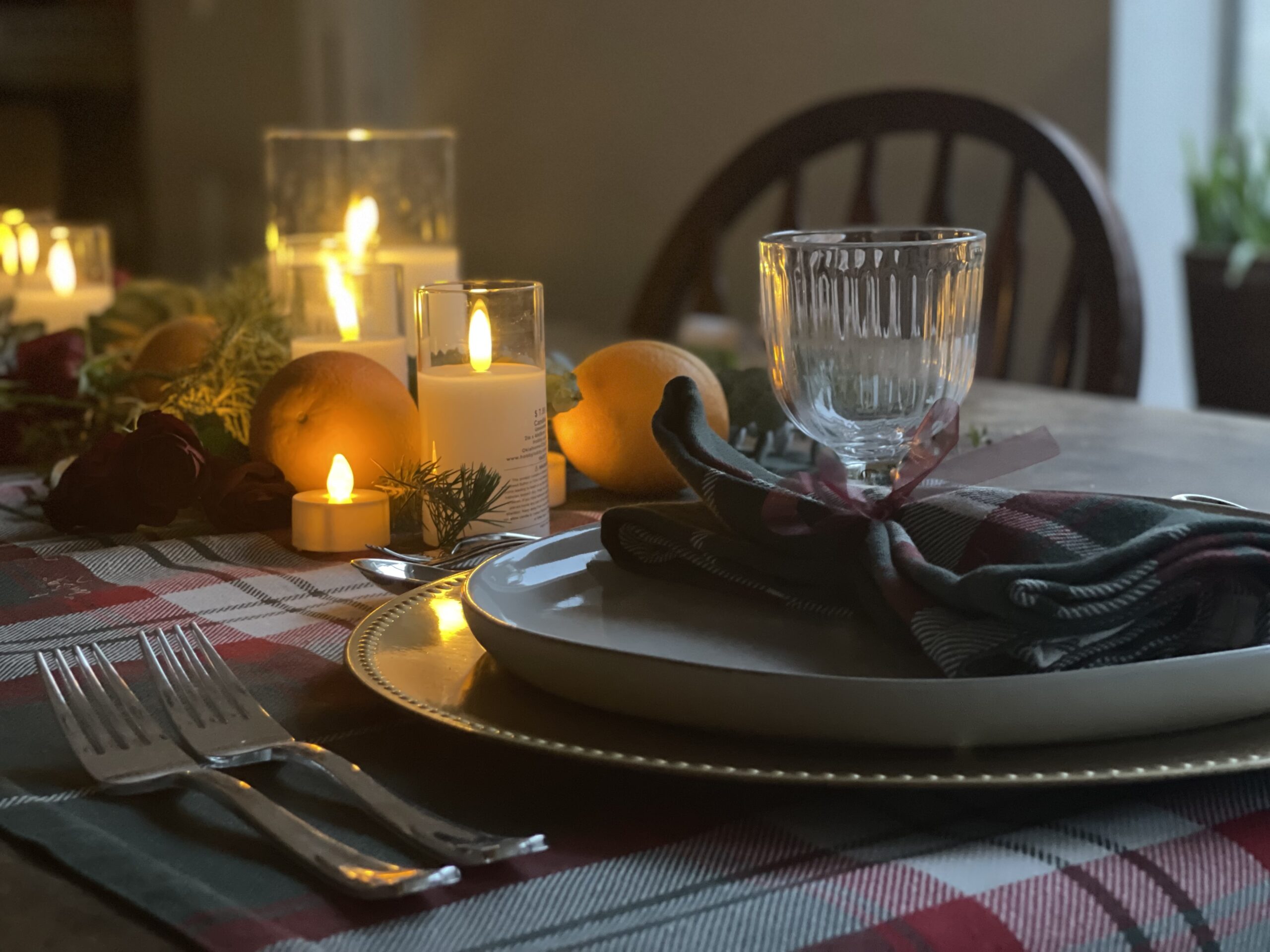

Formal Elegance:
For formal occasions like weddings or galas, a classic black-tie theme with crisp white linens, fine china, and crystal glassware is timeless. Elevated centerpieces with roses or orchids add sophistication.
Patriotic Holidays:
Patriotic holidays like the Fourth of July, Veteran's Day, and Memorial Day call for a spirited tablescape. A red, white, and blue scheme takes center stage, with checkered tablecloths evoking a picnic atmosphere. Mini American flags worked into floral arrangements make for charming centerpieces, while star-shaped napkin folds complete the patriotic look.
Sources for my Patriotic Tablescape: tablecloth | placemats | similar chargers | china and similar china | mini goblets | american flags | glass flamesless candles

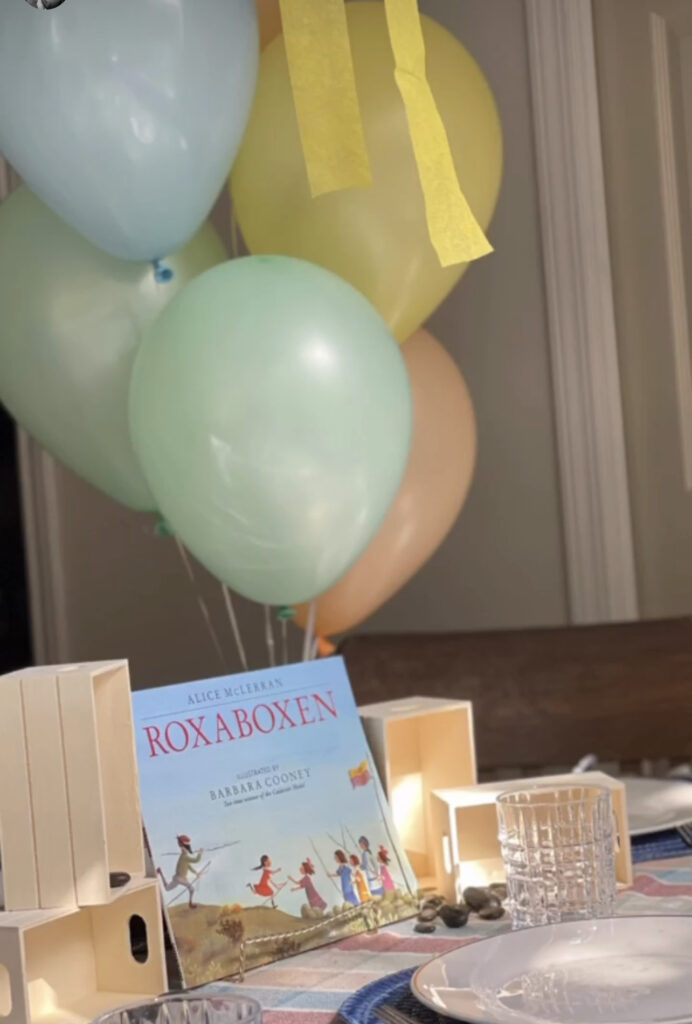
Birthday Celebrations:
These fun-packed tablescapes will often cater to the current obsessions of the celebrant. For kids, it may be Circus, Go-Karting, or even based on a favorite book. Opt for balloons, streamers, centerpieces, and dinnerware in a color palette that suits the theme.
My Child's Roxaboxen Themed Tablescape sources: Roxaboxen | book holder | pastel balloons | yellow streamers | mini crates | pebbles | similar plaid blanket | similar glasses | placemats | plates
Selecting a Color Palette
The color sets the mood for the dining experience, impacting the ambiance and guest perceptions. The significance of the color palette not only plays into the theme or concept but also influences the aesthetics. It ties together linens, dinnerware, and decor, creating a cohesive visual narrative.
The Psychology of Color
When choosing a color palette, it is helpful to have a basic understanding of the Psychology of Colors. Different colors evoke distinct emotions and feelings. Understanding color psychology can guide your choice. Here are the emotions that are invoked with a few commonly used colors.
Red: Stimulating and passionate, red can evoke excitement and appetite. It's perfect for lively gatherings or romantic dinners.
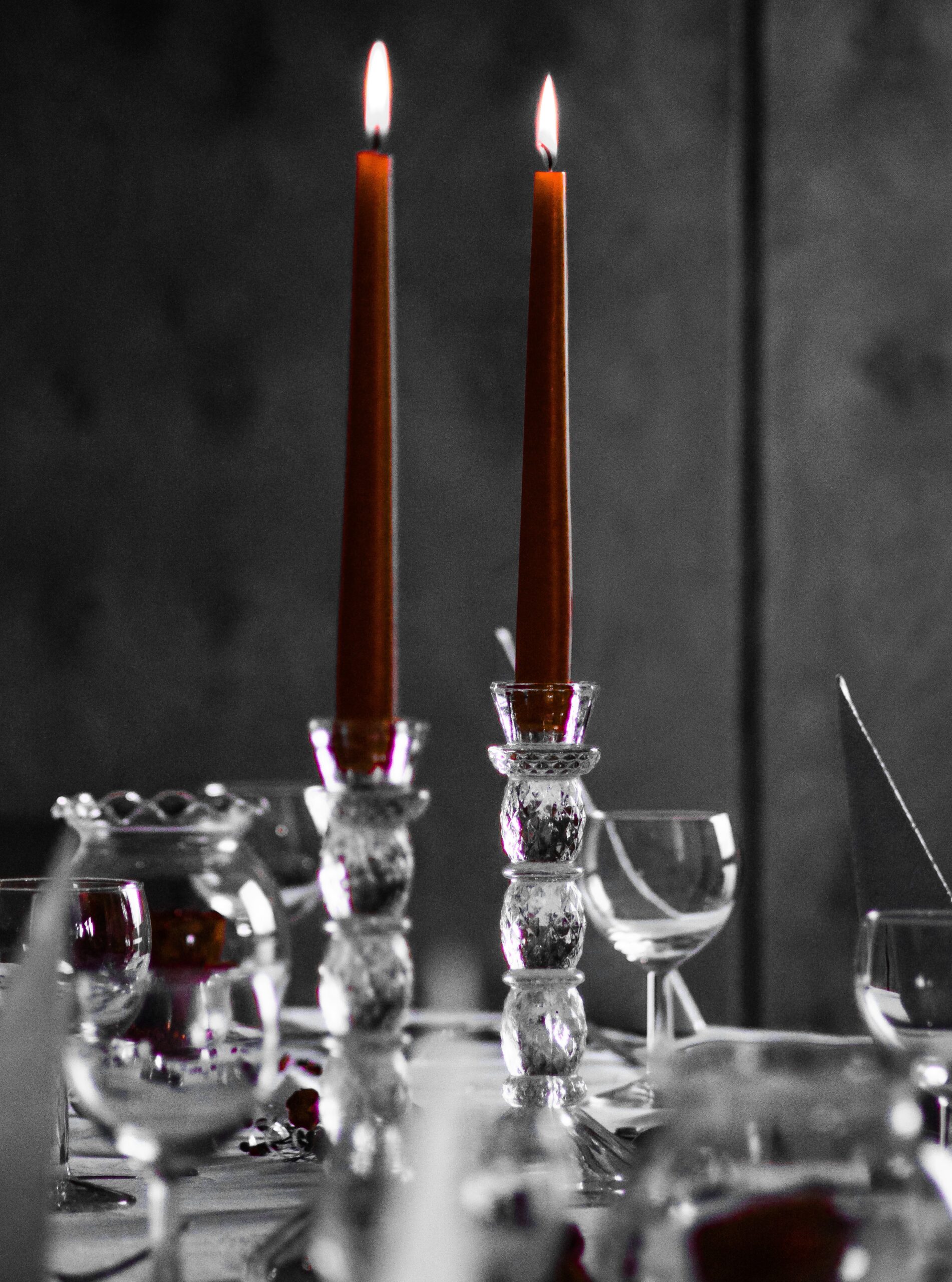
Blue: Calming and serene, blue encourages relaxation and tranquility. It suits formal dinners or coastal-themed settings.
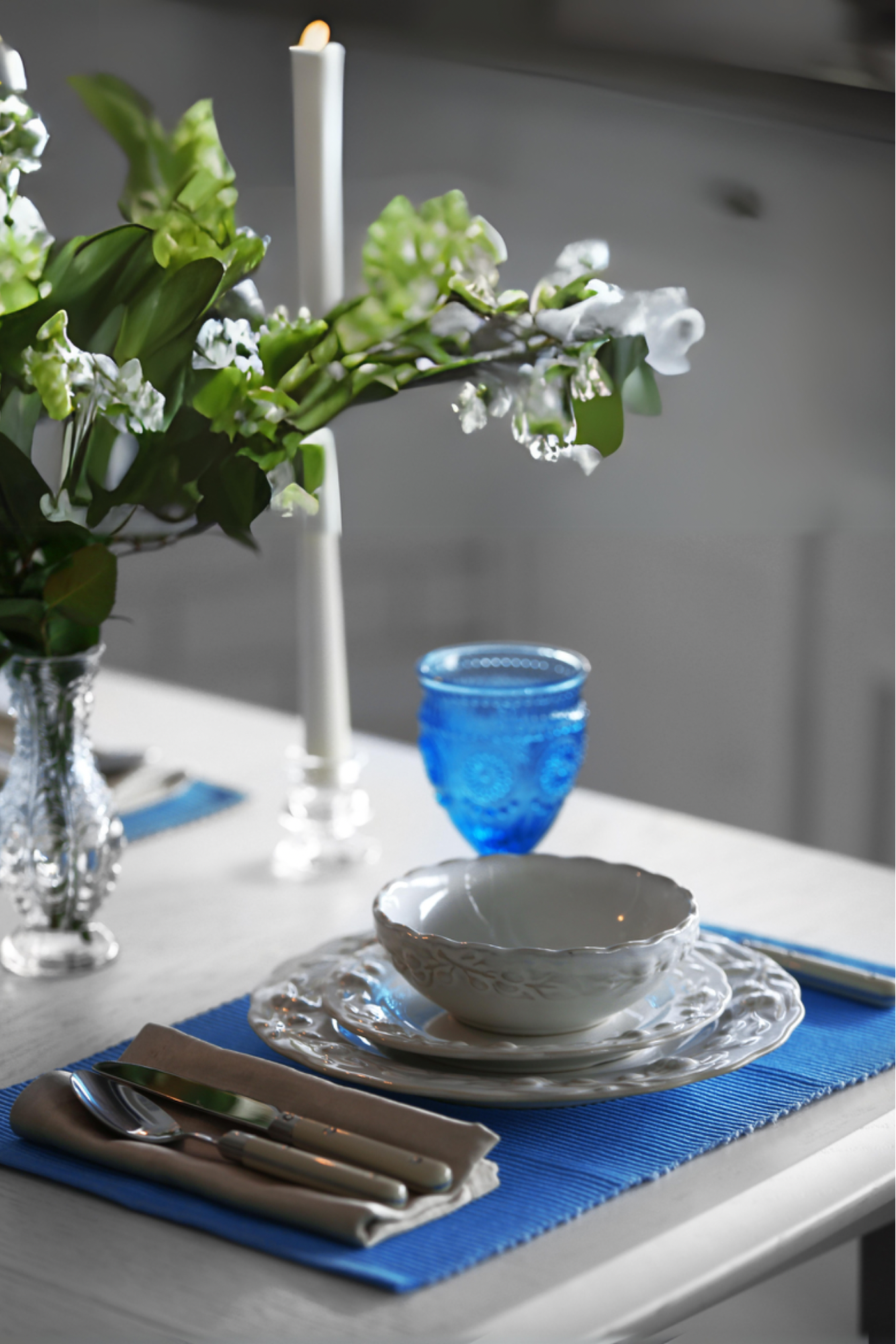
Green: Associated with nature and growth, green conveys freshness and vitality. Ideal for spring or outdoor-themed tablescapes.
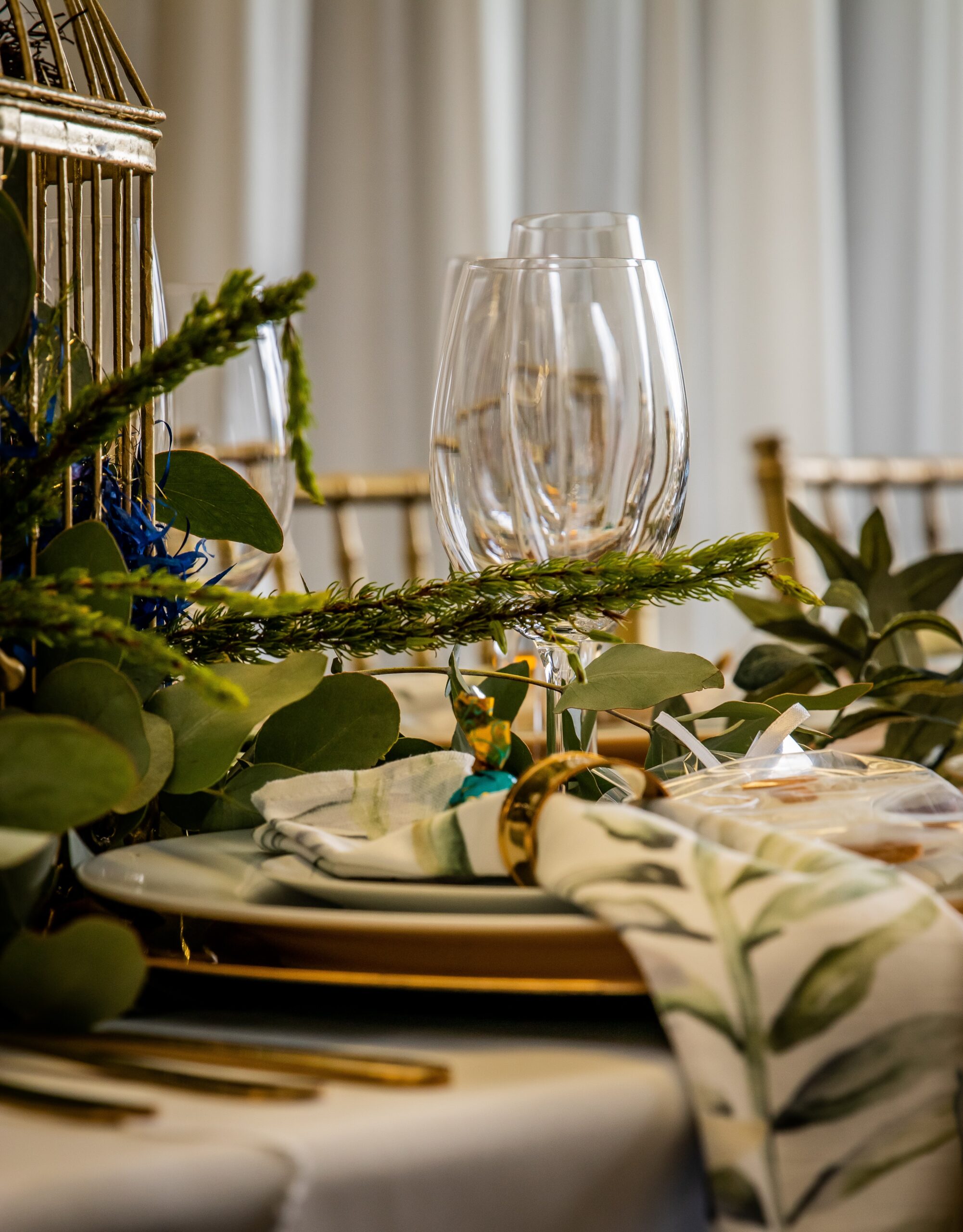
Yellow: Bright and cheerful, yellow exudes happiness and positivity. It's great for brunches or summer gatherings.
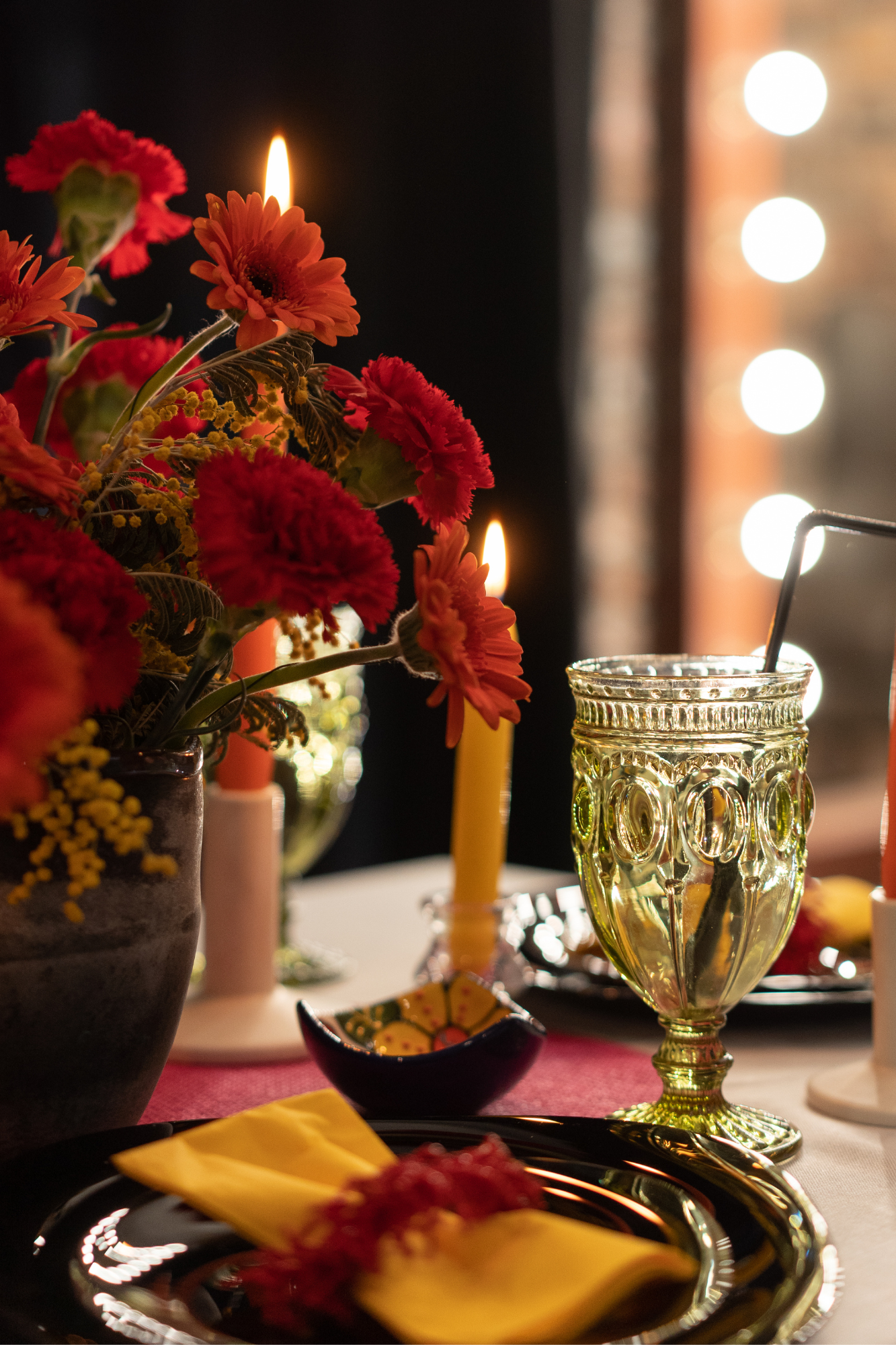
White: Symbolizing purity and simplicity, white creates an elegant and timeless look. Common in formal settings.
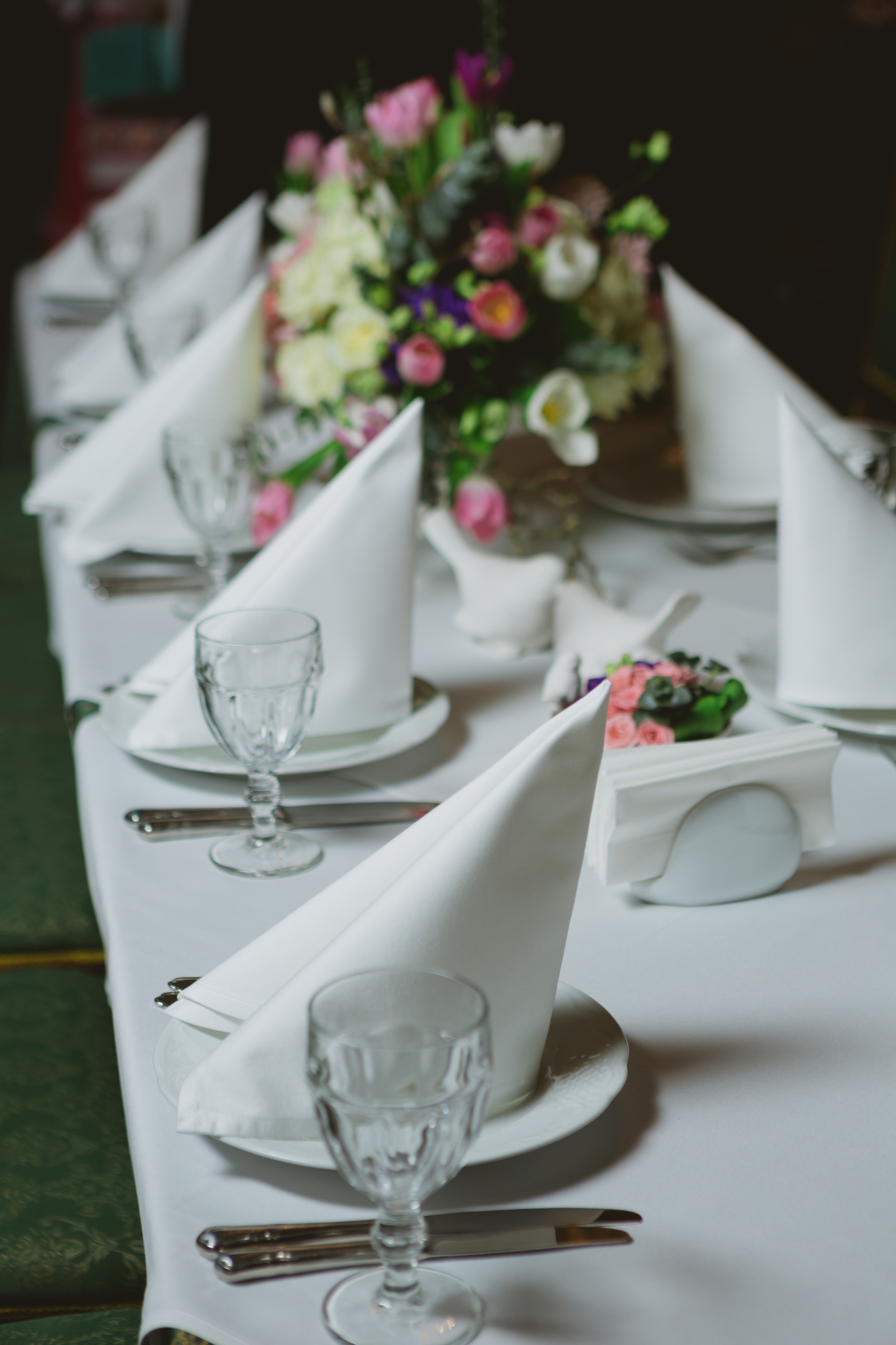
Neutral Tones: Subdued neutrals like beige or gray can provide versatility and sophistication.
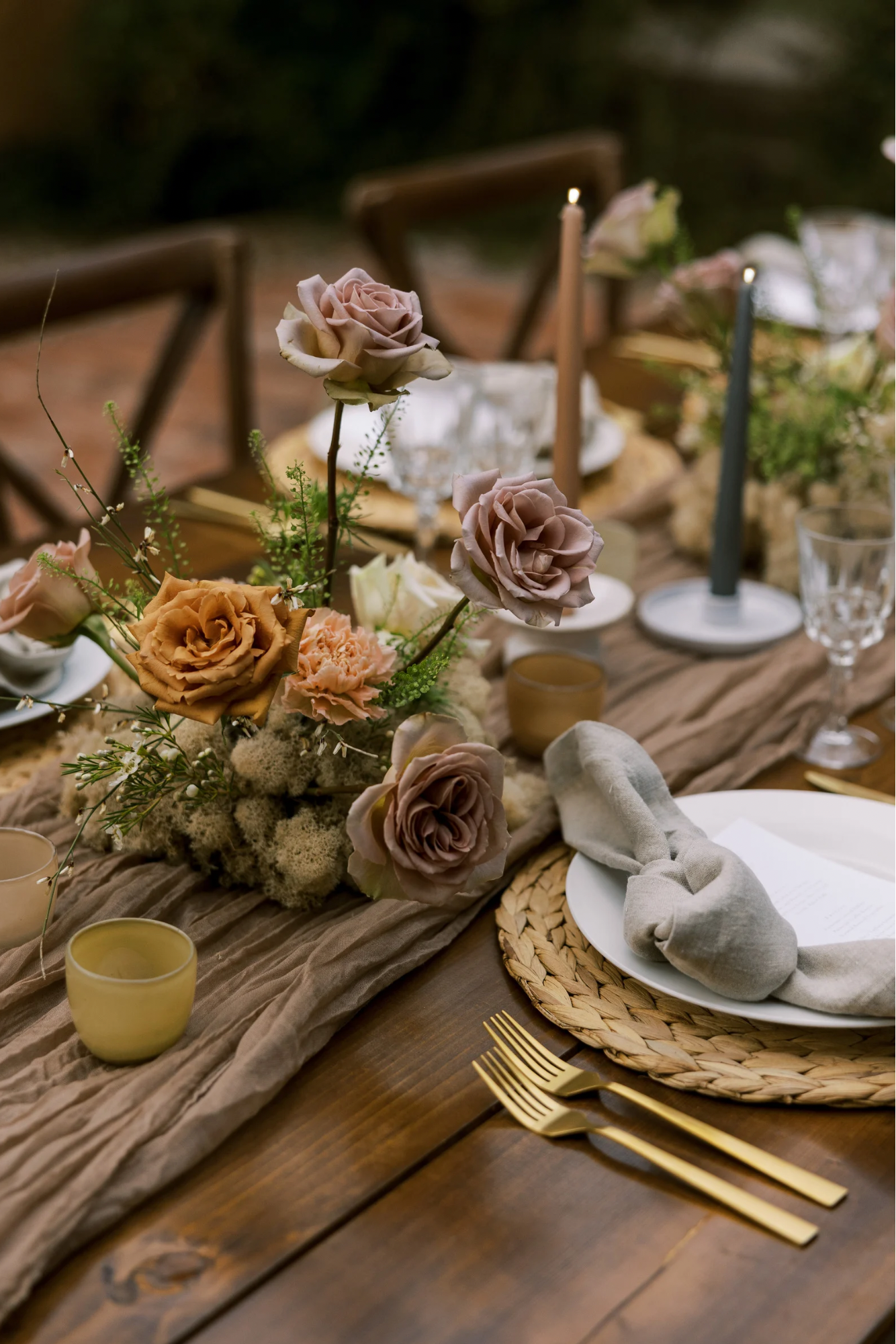
Consider the occasion and the desired atmosphere when selecting your color palette. Experimenting with various shades and combinations allows you to create a tablescape that not only pleases the eye but also resonates with the emotions and expectations of your guests.
Crafting Creative Centerpieces
Floral Arrangements
Lush floral centerpieces exude elegance. Consider seasonal flowers, greenery, and complementary vases. To create a floral arrangement, start with a foam block soaked in water to hydrate the flowers. Trim stems at an angle, insert them into the foam, and build a balanced composition. Use floral tape to secure stems and add depth with varying heights.
Candles
Candle centerpieces evoke warmth and romance. Cluster different-sized candles on a mirrored tray for an enchanting effect. Opt for unscented or pure beeswax candles that won't compete with the smell of food.
Fruit and Greenery
Careful curation of fruit and greenery is a simple yet striking choice. Arrange richly colored fruits like pears or pomegranates amidst deep greenery for a moody look.
With the right centerpieces and decor, your tablescape becomes a work of art, captivating guests and sweetening the occasion.
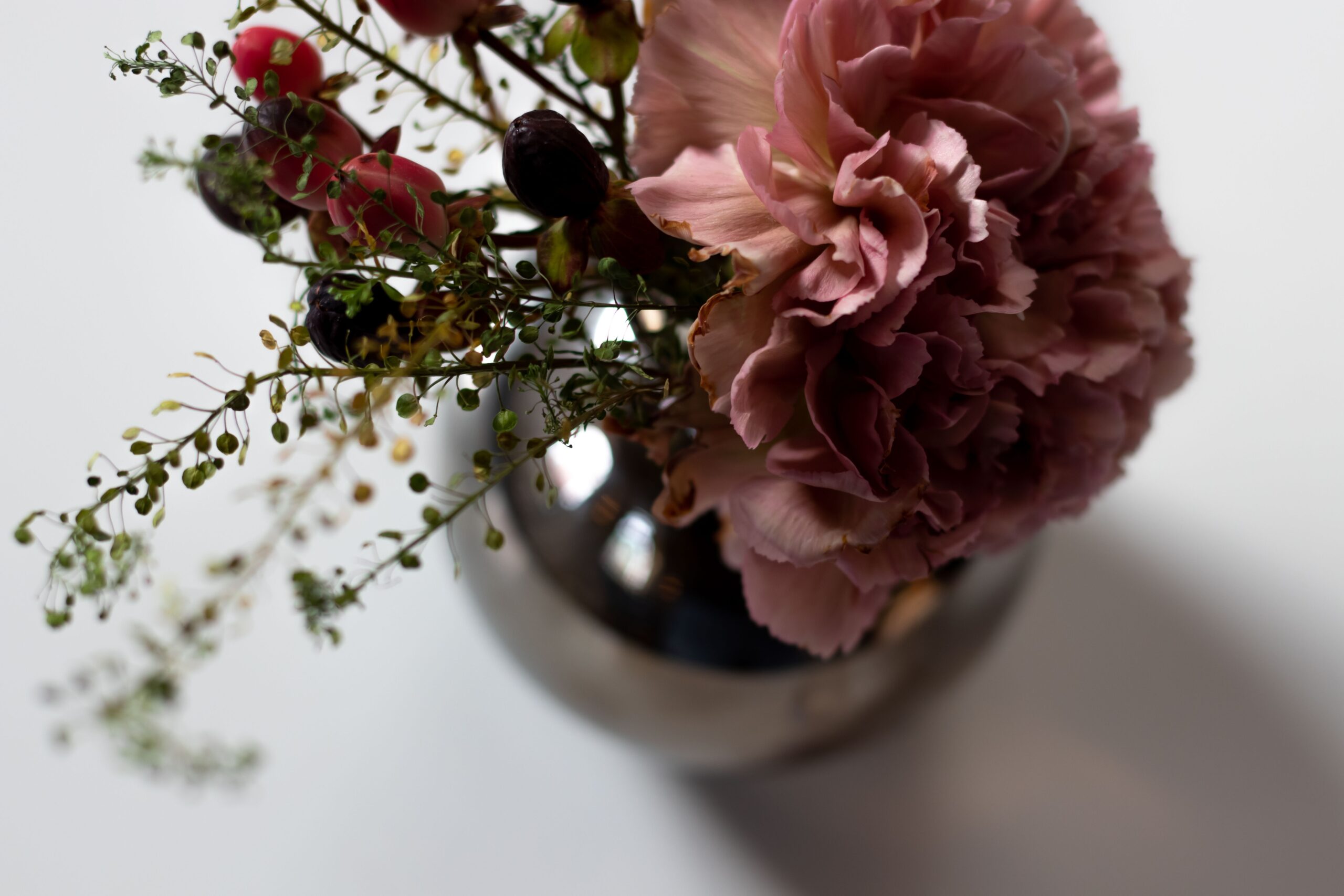
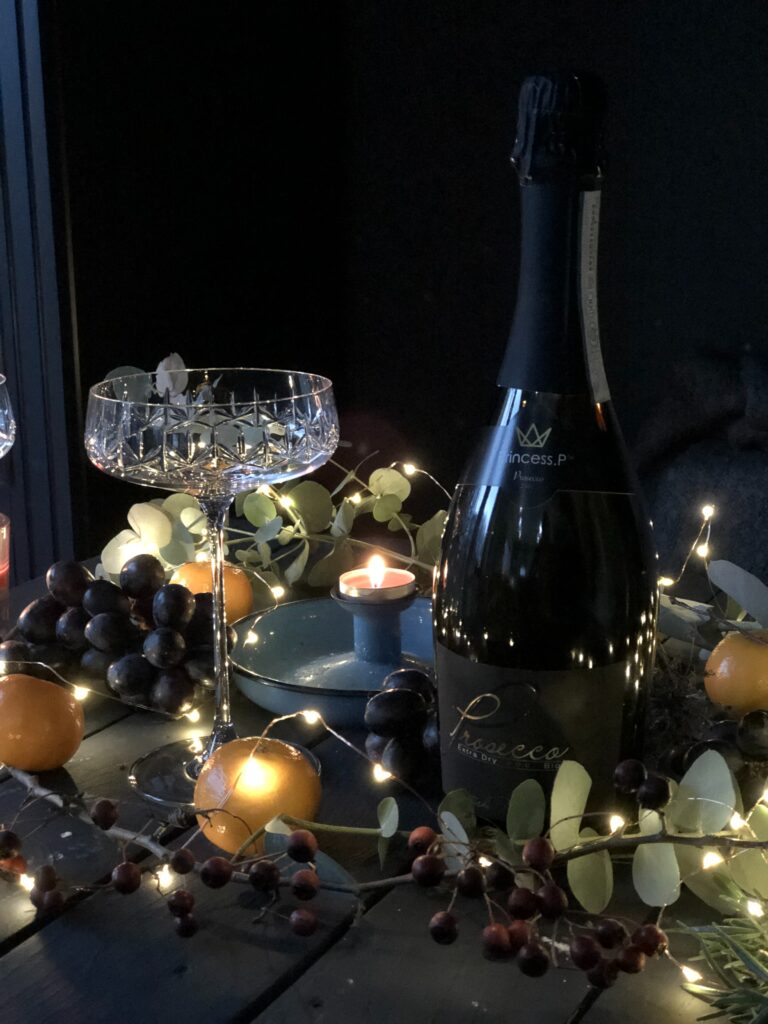
Attention to the Smallest Details
When it comes to table setting and tablescape design, the smallest details often make the most significant impact. Paying meticulous attention to these nuances is the hallmark of creating elegant and satisfying dining experiences. These details extend far beyond the arrangement of plates and glasses, encompassing the essence of hospitality.
The placement of a single rosebud in a delicate vase, the choice of a specific wine to complement a dish or the personal touch of a handwritten place card transforms a meal into a cherished memory.
They enhance the atmosphere, making guests feel welcomed and truly cared for. These details showcase the art of thoughtful hosting, where every aspect of the table setting has been considered with love and intention.
Remember, while tablescaping, the most minor details aren't just afterthoughts. They set the stage for conversations and laughter, create an ambiance of warmth and comfort, and invite guests to savor every moment.
Personal Touches and Details
Infusing personal touches and details into your tablescape heightens it from ordinary to exceptional. Place cards, customized menus, and intentional embellishments convey hospitality and make guests feel genuinely welcome.
Unique Small Detail Ideas
- Handwritten place cards with personalized messages or illustrations.
- Customized menus featuring the evening's courses and a heartfelt note.
- Embellishments like ribbon napkin rings, fresh herbs in place settings, or tiny party favors.
- Incorporating heirloom or sentimental items, such as family china or vintage flatware, into the table setting.
These small but meaningful details leave a lasting impression, making your tablescape reflect your thoughtfulness and creativity.
Table Setting: Ettiquette and Protocol
Seating Arrangements
Seating arrangements are the backbone of a well-organized dining experience. They play a pivotal role in fostering conversations, ensuring comfort, and facilitating the smooth flow of the meal. Here's how to master the art of seating arrangements:
Tips on Assigning Seats
Consider guest dynamics, placing guests who may enjoy each other's company or have common interests together. Mix different groups to encourage new connections. Honor special guests, seat the guest of honor, VIPs, or elders in a prominent position, often at the head of the table. Balance genders aiming for a balanced mix to foster inclusive conversations. Accessibility arrangements ensure that elderly or differently-abled guests have easy access to their seats and facilities.
Using Place Cards
Place cards help guests find their designated seats. They can be elegant, handwritten cards or creatively themed for casual gatherings. Position place cards either above the dinner plate or at the center of the table setting. Be considerate of guests with dietary restrictions or allergies, and use place cards to indicate their specific meal requirements.

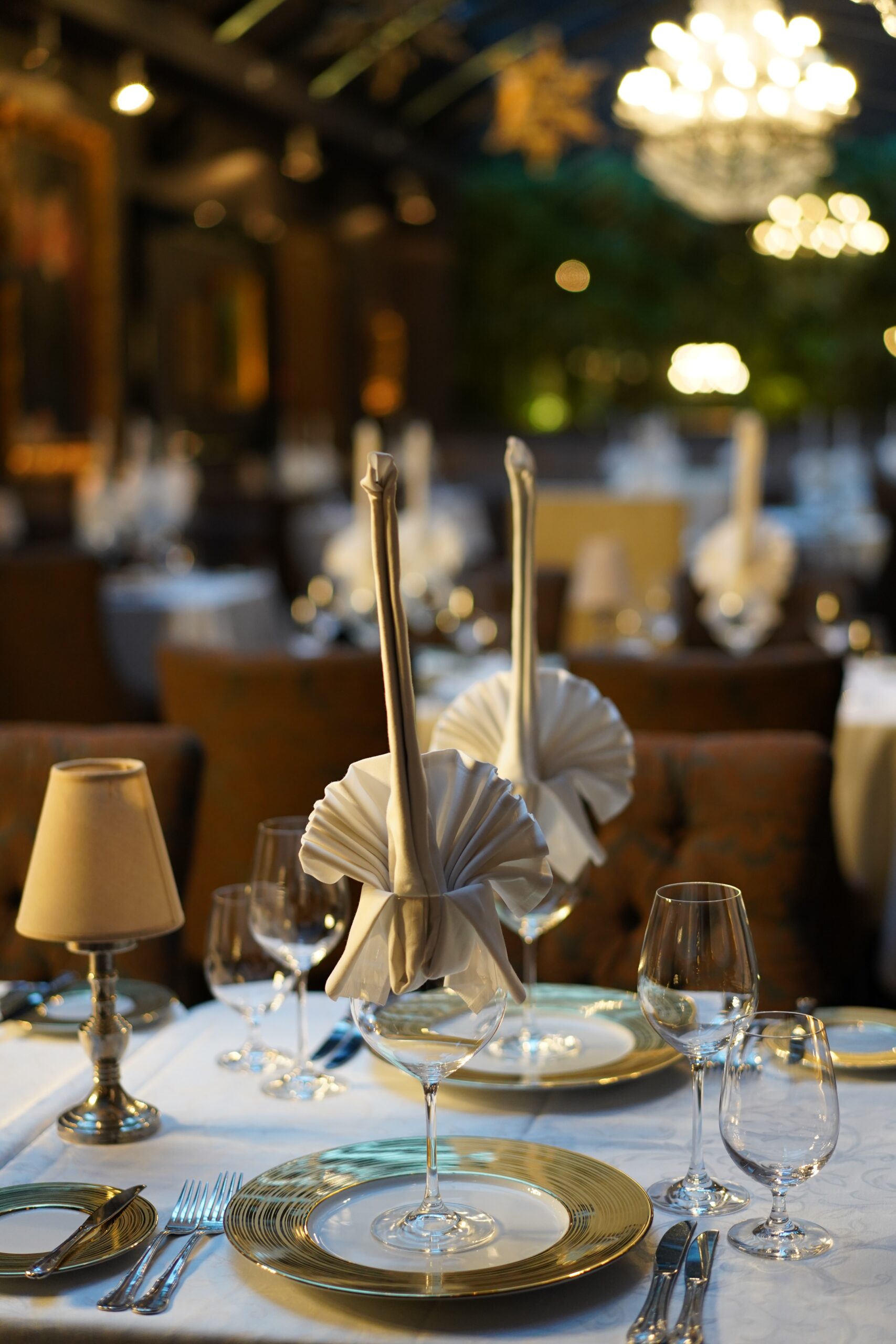
Napkin Use and Presentation
Proper napkin use and presentation are essential to table etiquette, adding an air of refinement to the dining experience.
Napkin Use
Upon seating, gently unfold your napkin and place it on your lap with the open side facing your body.Use your napkin to discreetly blot your mouth and hands during the meal.If you need to leave the table temporarily, loosely fold your napkin and place it to the left of your plate.
Creative Napkin Presentation
Napkin rings can add a decorative touch to your table setting. They come in various materials and styles to match many different themes.For a more simplistic or natural look, consider tying your napkin with a simple velvet ribbon or a fresh sprig of herbs.Cloth napkins can be elegantly folded into various shapes, such as a fan or a lotus blossom, for an artistic touch.
Timing of the Courses
Pace yourself with the rest of the guests. Avoid finishing your course significantly earlier or later than others to maintain a harmonious atmosphere. When hosting, you'll want to communicate with the kitchen to make sure courses are served at an appropriate interval, preventing guests from feeling rushed or waiting too long.
Polite Conversation and Behavior
Engaging in polite and pleasant conversation is essential for a successful dining experience. Follow these guidelines for maintaining an enjoyable atmosphere:
Polite Conversation
Initiate conversation with those seated near you. Engage in small talk to break the ice. Avoiding controversial or sensitive topics like politics or religion is a common courtesy. Always be a good listener, showing interest in what others say.
Behavior During the Meal
Aside from the obvious basics, such as not talking with your mouth full and keeping your elbows off the table, keep the biggest distraction in check-refrain from using your cell phone or other electronic devices during the meal unless necessary for an emergency.
Alcohol Etiquette
Serve and consume alcohol in moderation, especially in formal settings. Although having a little extra to wane off nerves may be tempting, overindulging can lead to embarrassing behavior you'll regret later. Don't ask me how I know.

Toasting
When toasting, maintain eye contact with others and raise your glass gently. Take a sip afterward.
Following these etiquette guidelines encourages a refined and enjoyable dining experience for both hosts and guests, allowing everyone to focus on the pleasures of the meal and each other's company
Wine Pairing: Elevating the Dining Experience
Wine pairing is a culinary art that has stood the test of time, dating back to ancient civilizations like the Greeks and Romans. It's the practice of selecting wines that complement and enhance the flavors of a meal, adding depth and complexity to the dining experience. Understanding wine pairing principles can significantly improve your table setting and tablescape.
The History of Wine Pairing
The concept of wine pairing can be traced back to ancient Greece, where philosophers and scholars believed in the harmonious interplay of food and drink. Over the centuries, this idea evolved, finding its way into European royal courts and monasteries, where meticulous attention was paid to marrying wine with cuisine. Today, wine pairing is a culinary discipline cherished by sommeliers and avid food enthusiasts.


Wine Pairing Basics
Balance
Seek a harmonious balance between the wine's characteristics and the dish's flavors. For example, a rich, full-bodied red wine complements a hearty steak.
Matching Intensity
Pair the intensity of the wine with the dish. Light wines like Sauvignon Blanc go well with delicate seafood, while robust Cabernet Sauvignons shine with bold, grilled meats.
Complementary Flavors
Look for flavors that complement each other. For instance, a buttery Chardonnay complements the creaminess of a risotto.
Wine Pairing for Courses
Appetizers
Crisp and refreshing white wines like Pinot Grigio or sparkling wines cleanse the palate and enhance appetizers' flavors.
Main Courses
Pair red wines like Merlot or Shiraz with red meats and white wines like Chardonnay or Sauvignon Blanc with poultry or fish dishes.
Cheese
The world of cheese offers endless pairing possibilities. Soft, creamy cheeses go beautifully with sparkling wines or light whites, while bold, aged cheeses pair well with robust reds.
Meat Pairing
Beef
Robust reds like Cabernet Sauvignon or Malbec complement the richness of beef, while Pinot Noir provides a lighter, elegant option.
Chicken
Chicken is a versatile meat that pairs well with Chardonnay for roasted chicken or Pinot Noir for grilled chicken.
Fish
Lighter whites like Sauvignon Blanc enhance the delicate flavors of fish, while a crisp Chardonnay can complement more substantial, buttery fish dishes.
The Added Value to the Table Setting
Wine pairing brings an extra layer of sophistication and refinement to your table setting. It demonstrates a thoughtful and considerate approach to hosting, elevating the dining experience for your guests.
The choice of wines, their presentation, and the deliberate pairing with each course become an integral part of the tablescape, adding visual and sensory appeal.
When wines are chosen to complement the meal, it creates a dynamic synergy that enhances the flavors on the palate and enriches the conversation around the table. The clinking of glasses, the aroma of wine, and the enjoyment of well-paired dishes foster a convivial atmosphere that makes dining an unforgettable experience.
Incorporating wine pairing into your table setting is not just about matching wines with food; it's about crafting a holistic sensory journey where every element contributes to a memorable and enjoyable occasion.
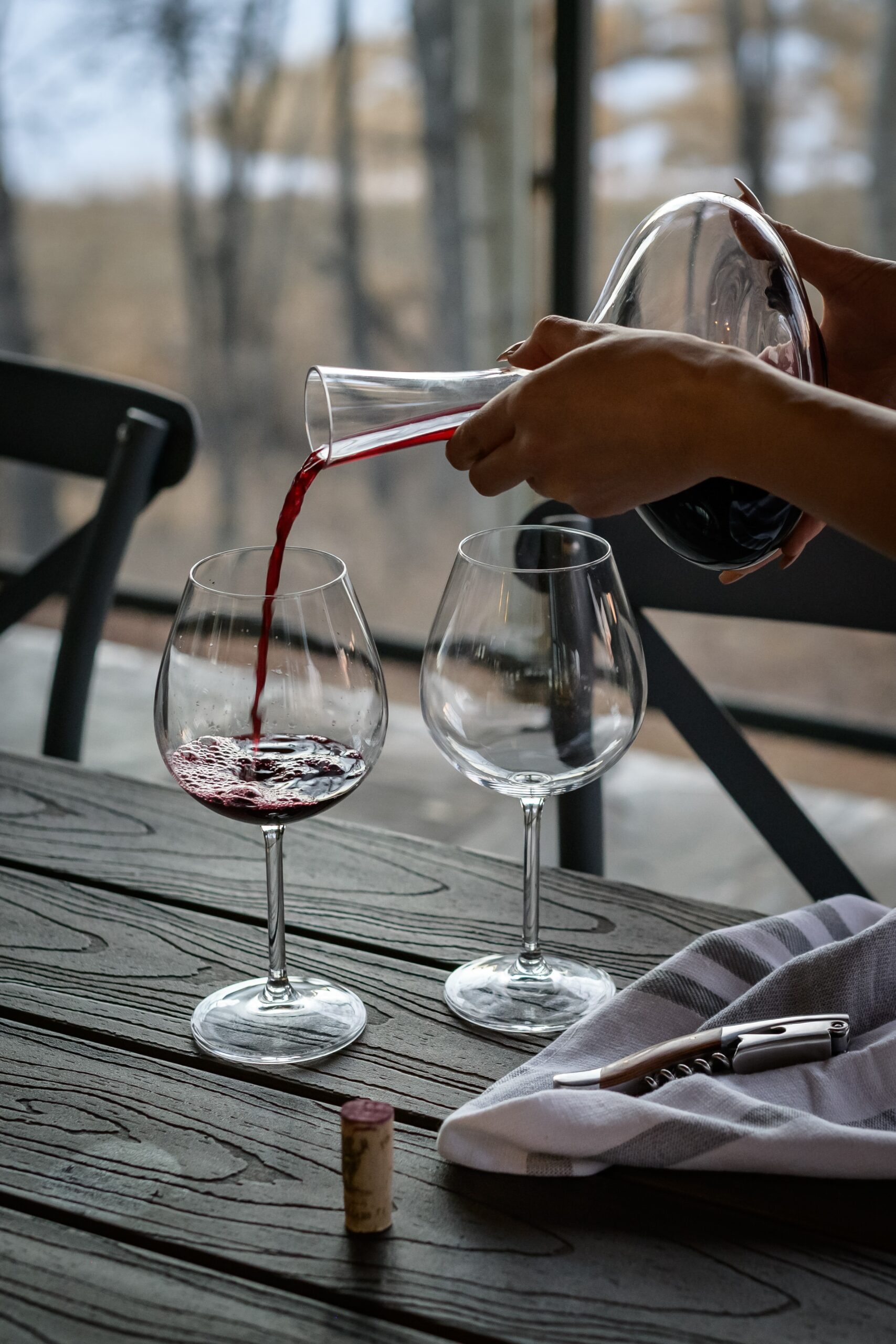
Conclusion
Wrapping up this comprehensive guide to table setting and tablescape design, remember that hosting is an art form, and every detail matters. From the choice of dinnerware to the arrangement of centerpieces, from the thoughtful placement of guests to the careful selection of wines, each decision contributes to an unforgettable experience.
Whether hosting an intimate gathering or a grand celebration, these principles remain timeless. Let your creativity flourish and infuse your unique personality into your table settings, making your table a place for precious memories, where every detail, no matter how small, contributes to the hospitality and creates a lasting impression on your guests.

